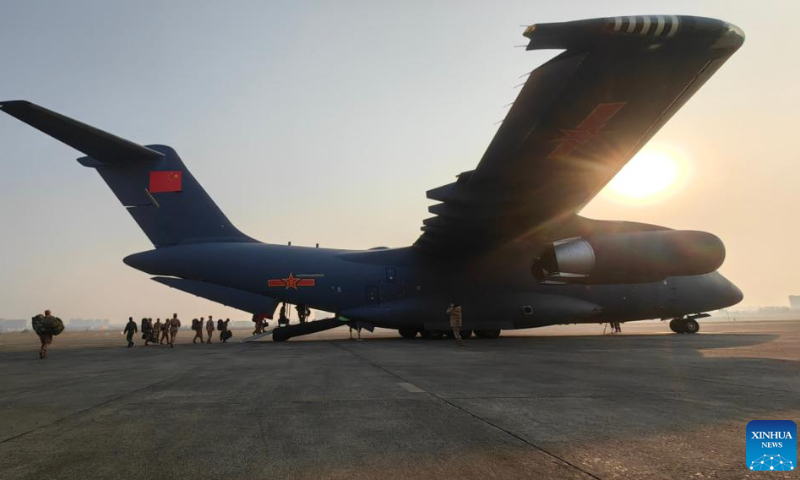
A Y-20 transport aircraft carrying an emergency command group from the Chinese People's Liberation Army (PLA) Western Theater Command is pictured before taking off from a military airport in southwest China in response to a 6.2-magnitude earthquake, on December 19, 2023. Photo: Xinhua
Gansu's emergency management bureau said at a press conference on Thursday that the province's earthquake relief work has achieved a phased victory. Behind the victory is the wide use of a range of high-tech equipment to support search and rescue efforts.
Chinese Y-20 military aircraft are being used to transport large rescue vehicles, while the Wing Loong unmanned aerial vehicle (UAV) is being operated to assist with emergency telecommunication support and disaster reconnaissance tasks.
Public communication networks in the affected areas has been largely restored to normal.
Global Times reporters on the scene witnessed a Y-20 aircraft carrying an emergency command group under PLA Western Theater Command to a disaster site. Military expert Zhang Xuefeng told the Global Times that the Y-20 has a large payload, long range, and a larger cargo hold, making it suitable for transporting larger rescue vehicles.
Zhang noted that setting up the emergency command group on the front line can provide a more accurate and rapid understanding of the situation on the ground, including the terrain, weather, and extent of the disaster in the affected areas, and coordinate and command rescue forces to launch targeted rescue operations on short notice.
On the afternoon of December 19, two helicopters from the PLA 76th Group Army landed on a temporary helipad at a middle school in Jishishan county, the epicenter of the earthquake, carrying out tasks such as aerial reconnaissance, material delivery, and medical evacuation.
Global Times reporters witnessed the wide use of the UAV for lighting at the temporary resettlement sites, which support to ensure all operations could be carried out in an orderly and efficient manner even in the dark.
Several hovering lights are installed in the air. These lighting UAVs are connected to the ground power supply equipment through a cable, allowing them to stay in the air for a long time and provide emergency lighting for large areas at night, making them the "brightest stars in the night sky."
According to the Ministry of Emergency Management, China's tethered UAVs are relatively advanced and are being used for emergency communication.
After a major disaster, especially an earthquake, if conventional communication facilities in the affected areas are destroyed or damaged, these tethered UAVs can be used to establish an emergency communication system, overcoming signal blockage caused by tall buildings, and achieving network communication over distances of 10 to 100 kilometers or more. This enables real-time communication between the rescue site and emergency responders.
The Global Times learned that the UAVs employed in the disaster relief mission this time have a lighting range of up to 8,000 square meters. They can withstand wind speeds of up to level 7, heavy rain of up to level 10, and temperatures as low as -20 C, providing a wide range, high brightness, and uninterrupted lighting support for emergency rescue in the earthquake-stricken area.



